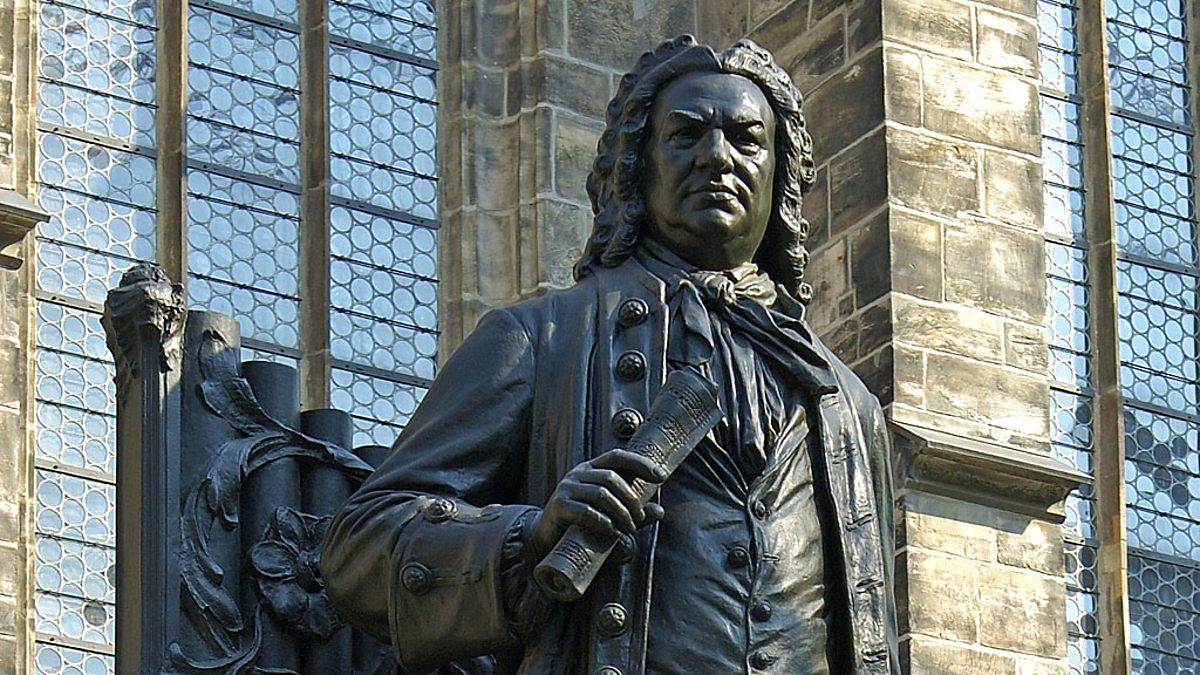On Wednesday, we explored J.S Bach’s Orchestral Suite No. 2, a festive and celebratory collection of Baroque dances that is nonetheless shrouded in veiled, mysterious B minor. (It’s the only one of Bach’s four Orchestral Suites to be set in a minor key). The nineteenth century Austrian pianist, composer, and educator Ernst Pauer believed that each musical key embodies a distinct atmosphere. He called B minor “that very melancholy key” which “tells of a quiet expectation and patient hope.” It’s the key of Schubert’s haunting “Unfinished” Symphony, Dvořák’s nostalgic Cello Concerto, Tchaikovsky’s Sixth Symphony (the Pathétique), and Sibelius’ dark and woodsy final tone poem, Tapiola.
B minor seems to have brought out Bach’s most chromatic, dissonant, and mysterious side. The most famous example is the revelatory Mass in B minor, completed a year before the composer’s death. We will save that monumental work for an upcoming post. For now, let’s listen to three other pieces which capture the mystery and adventure of Bach in B minor:
Sonata for Flute and Harpsichord in B minor, BWV 1030
The existing autograph manuscript for this piece dates from sometime around 1735 during the time when Bach served as director of the Collegium Musicum in Leipzig. It was adapted from an earlier score, written in the key of G minor. It’s possible that Bach wrote the demanding flute part with his son, Johann Gottfried Bernhard, in mind.
We might expect the harpsichord to function as a continuo line, supporting the flute by providing an ornamented harmonic outline while staying in the background. Instead, here the harpsichord is an equal partner, engaging in a vibrant, continuous conversation with the solo flute. From the opening movement (Andante), this is music which wanders occasionally into mysterious chromatic lands. In the second movement (Largo e dolce), a beautiful and expansive melody unfolds in the flute under the orchestra’s ripieno heartbeat. The final movement (Presto) begins with a three voice fugue involving the flute and harpsichord lines. This leads to a sparkling, virtuosic gigue in 12/16 time.
This 1985 recording features Jean-Pierre Rampal (flute) and Trevor Pinnock (harpsichord):
Prelude and Fugue in B minor, BWV 869
This music concludes Book I of Bach’s Well-Tempered Clavier, a collection of preludes and fugues which move through all twenty-four major and minor keys. It takes us on wild and far-reaching chromatic adventures. The fugue subject uses all twelve pitches of the chromatic scale and delivers wrenching dissonances which seem to anticipate the twentieth century tone rows of Arnold Schoenberg. The pianist, András Schiff wrote,
To me, Bach’s music is not all black and white; it’s full of colors. In my imagination each tonality corresponds to a color. The Well-Tempered Clavier … provides an ideal opportunity for this fanciful fantasy. […] The last piece … is in B minor which is the key to death. Compare the fugue … to the Kyrie of the B-minor Mass. This has to be pitch-black.
Schiff performs BWV 869 on the piano in this excellent recording. Here is a more recent performance by the Dutch harpsichordist, Bob van Asperen:
Partita No. 1 in B minor BWV 1002
We return to the elegance of Baroque dance with Bach’s Partita No. 1 for solo violin, written in 1720. The collection includes an Allemanda, Corrente, Sarabande, and Tempo di Borea. Each movement is followed by a harmonic variation called a Double.
Here is a period performance by the British violinist, Rachel Podger:
Recordings
- J.S. Bach: Sonata for Flute and Harpsichord in B minor, BWV 1030, Jean-Pierre Rampal, Trevor Pinnock Amazon
- J.S. Bach: Prelude and Fugue in B minor, BWV 869, Bob van Asperen Amazon
- J.S. Bach: Six Sonatas and Partitas for Violin Solo, Rachel Podger channelclassics.com


What can I say? B minor at its finest. That Dutchman was amazing. I heard what I try to do when playing the WTC, but he does it – there are four little tiny guys inside the harpsichord, each playing – or singing – the theme in a richly ornamented way, with infinitesimal rubato-like subtleties, and they are all driven by that guy’s fingers.
I concur with the black-and-white pictures of what I presume is Dutch or North French scenery; B minor to me is sepia or a deep brown or dark maroon sort of key, with its low tonic and very deep dominant.